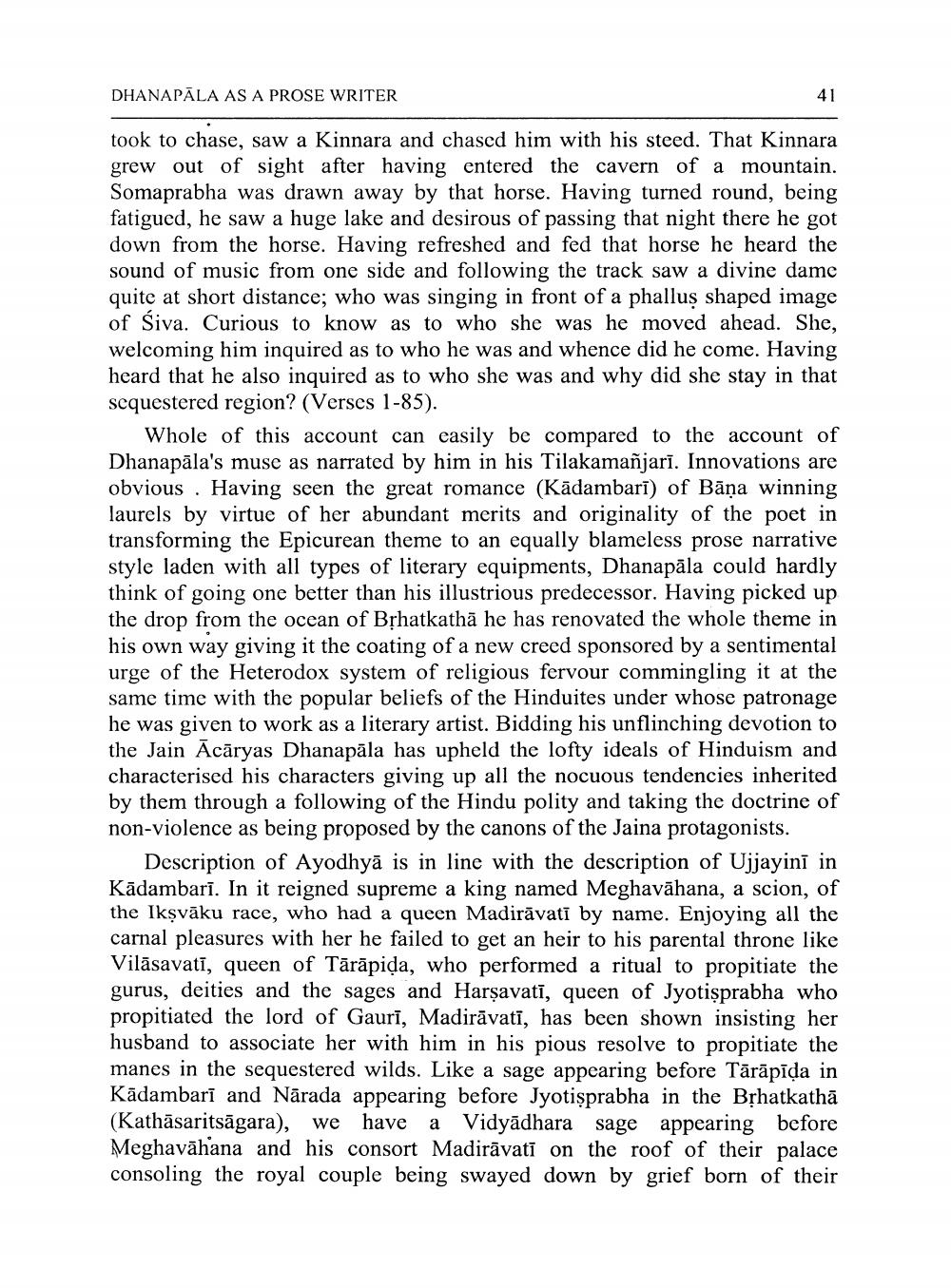________________
DHANAPALA AS A PROSE WRITER
41
took to chase, saw a Kinnara and chased him with his steed. That Kinnara grew out of sight after having entered the cavern of a mountain. Somaprabha was drawn away by that horse. Having turned round, being fatigued, he saw a huge lake and desirous of passing that night there he got down from the horse. Having refreshed and fed that horse he heard the sound of music from one side and following the track saw a divine dame quite at short distance; who was singing in front of a phallus shaped image of Śiva. Curious to know as to who she was he moved ahead. She, welcoming him inquired as to who he was and whence did he come. Having heard that he also inquired as to who she was and why did she stay in that sequestered region? (Verses 1-85).
Whole of this account can easily be compared to the account of Dhanapala's muse as narrated by him in his Tilakamañjarī. Innovations are obvious. Having seen the great romance (Kādambarī) of Bāņa winning laurels by virtue of her abundant merits and originality of the poet in transforming the Epicurean theme to an equally blameless prose narrative style laden with all types of literary equipments, Dhanapala could hardly think of going one better than his illustrious predecessor. Having picked up the drop from the ocean of Bṛhatkatha he has renovated the whole theme in his own way giving it the coating of a new creed sponsored by a sentimental urge of the Heterodox system of religious fervour commingling it at the same time with the popular beliefs of the Hinduites under whose patronage he was given to work as a literary artist. Bidding his unflinching devotion to the Jain Acaryas Dhanapāla has upheld the lofty ideals of Hinduism and characterised his characters giving up all the nocuous tendencies inherited by them through a following of the Hindu polity and taking the doctrine of non-violence as being proposed by the canons of the Jaina protagonists.
Description of Ayodhya is in line with the description of Ujjayinī in Kādambarī. In it reigned supreme a king named Meghavāhana, a scion, of the Ikṣvāku race, who had a queen Madirāvatī by name. Enjoying all the carnal pleasures with her he failed to get an heir to his parental throne like Vilāsavati, queen of Tārāpiḍa, who performed a ritual to propitiate the gurus, deities and the sages and Harşavati, queen of Jyotiṣprabha who propitiated the lord of Gauri, Madirāvatī, has been shown insisting her husband to associate her with him in his pious resolve to propitiate the manes in the sequestered wilds. Like a sage appearing before Tārāpīḍa in Kādambarī and Narada appearing before Jyotișprabha in the Bṛhatkathā (Kathāsaritsāgara), we have a Vidyadhara sage appearing before Meghavahana and his consort Madirāvatī on the roof of their palace consoling the royal couple being swayed down by grief born of their




